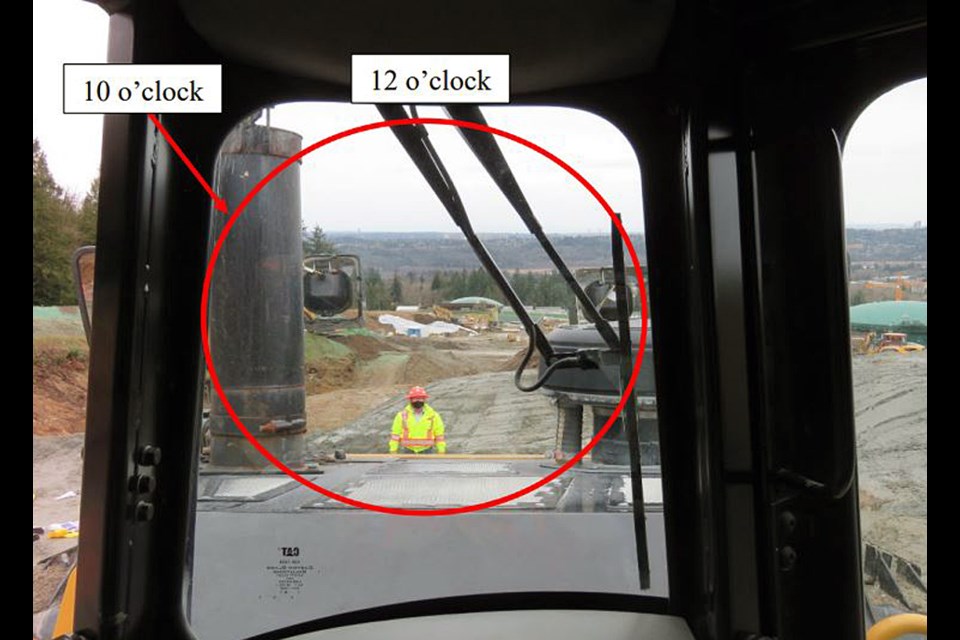A bulldozer operator working at Trans Mountain’s Burnaby Mountain terminal had just finished spreading and levelling the last load of soil on a dirt road across Eagle Creek on Dec. 15, 2020, when he reversed and spotted an alarming sight – a high-visibility vest.
The vest belonged to a geological technician who had been hidden in the dozer's blind spot and who had just been “seriously injured” by the blade of the machine, according to a WorkSafeBC incident investigation report obtained by the NOW in a freedom of information request.
“The dozer operator immediately shut down the dozer and started the emergency response,” states the report.
WorkSafe has now fined the injured worker’s employer – engineering firm WSP Canada Inc. – for more than $6,900 in relation to the incident, after determining the company had failed to provide “adequate oversite to its supervisor (the injured man) to ensure that established safe work procedures were being followed.”
“The WSP health and safety management system failed to ensure someone was supervising the supervisor on site with regard to occupational health and safety,” the report states.
WorkSafe also found Kiewit Ledcor TMEP Partnership, the entity carrying out the large-scale infrastructure work for the Lower Mainland portion of the pipeline expansion, had failed to adhere to its own recommended hazard controls to prevent workers from entering a hazardous area.
Under KLTP’s health and safety system, sandwich boards are used to designate controlled areas to remind workers to sign on to the job hazard analysis for that area and notify the superintendent before entering, according to the report.
But the area where the worker was hit was not given the controlled area designation by KLTP, the report said.
A KLTP foreman had even flagged workers on foot near mobile equipment as a hazard at a morning safety meeting that day and reviewed safe work procedures, like the use of flaggers, traffic control and safety berms.
But no spotter was used, according to the report, and the two-way radio the dozer driver had was dead because it had been left on all night, so he had to rely on hand signals.
“At the time of the incident, none of the identified controls that could have prevented the geological technician from entering the hazardous work area, such as trained spotters, two-way radios, or sandwich boards, were implemented,” states the report.
Information about the geological technician’s injuries is redacted in the report obtained by the NOW.
Seven weeks before the Burnaby accident, another worker (40- year-old Samatar Sahal) died at a TMX worksite outside of Edmonton after being caught and pinned under a crossbeam of a trench box that was being taken apart.
On Dec. 18, 2020, Trans Mountain shut down the entire expansion project for a “thorough review and examination of all workplace safety protocols and practices,” according to a statement.
“Over the past two months, we have seen safety incidents at our worksites that are unacceptable to Trans Mountain,” Trans Mountain president and CEO Ian Anderson said at the time.
The stand down was only expected to last a little over two weeks, but work didn’t resume for two months.
Follow Cornelia Naylor on Twitter @CorNaylor
Email [email protected]



